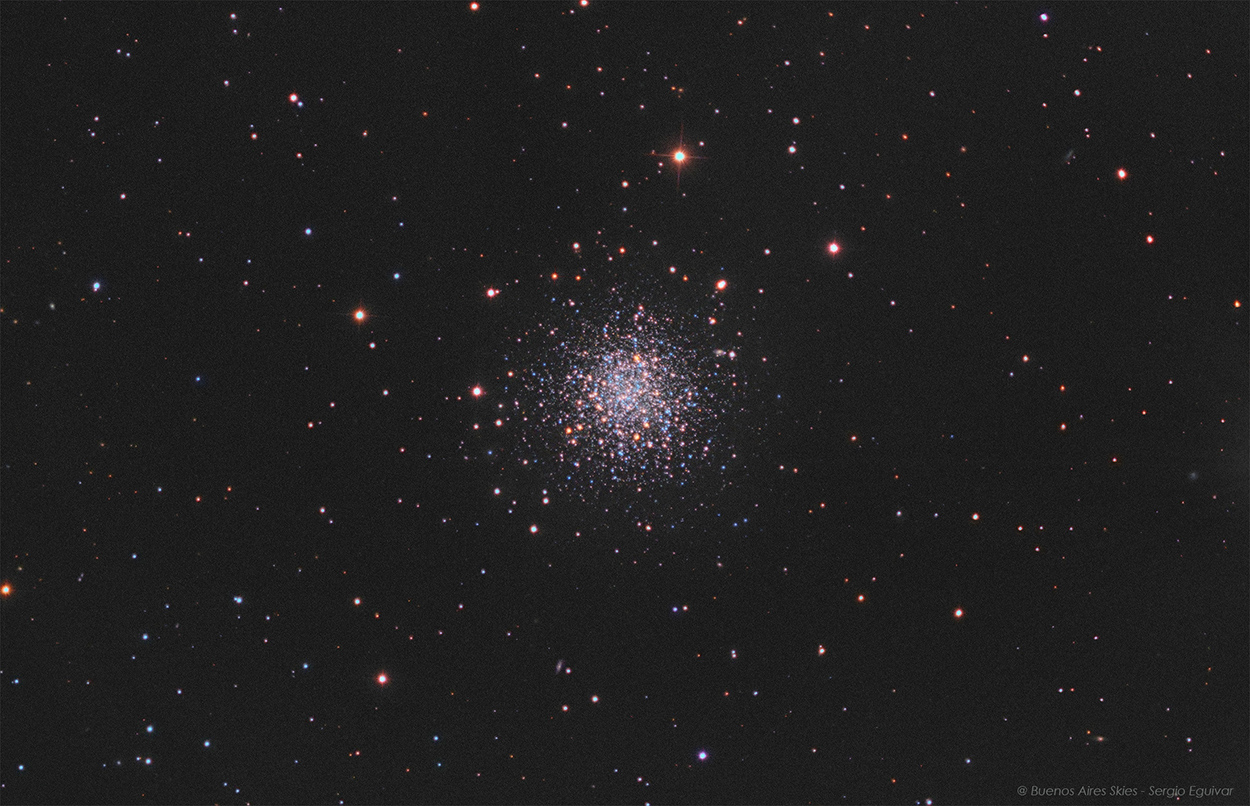
| HOME |
NGC 288
GLOBLAR CLUSTER IN SCULPTOR
(Image centered at: ra 00 h:58 m / dec - 26º 35')
CLICK THE IMAGE FOR A HIGH RESOLUTION VIEW
September - 2023, Home Backyard in Martinez, Buenos Aires, Argentina
DATA
TYPE: Open Cluster
APPARENT DIAMETER: 13.8 arc minutes
APPARENT MAGNITUDE (V): 8.1
DISTANCE: 29,200 light years
IMAGE INFORMATION
INSTRUMENT: 6" ORION OPTICS UK (Ultra Grade Optics) w/Sky Watcher Coma Corrector (0.9x) working at at f4.5
CAMERA: QHY 183 MONO
MOUNT: VIXEN GDPX, OAG with Starlight Xpress Lodestar
FILTERS: BAADER LRGB Set
SKY CONDITIONS: urban skies - Bortle 8
EXPOSURES: LRGB (40,40,40,40)
OBJECT DESCRIPTION AND IMAGE SESSION
NGC 288 is a bright (magnitude 8) Globular Cluster, with stars of magnitude 12 thru 16 and only a small central condensation. This Globular was first spotted on 27 October 1785 by the German-British astronomer Wilhelm Herschel with its 18.7 inch reflector. The cluster is located 1.8 degrees south east from NGC 253 and 3,1 degrees form from Alpha Sculptoris.
Like most globular clusters, NGC 288 travels in an elliptical orbit around the galactic center, from which it is currently at a distance of approximately 39'000 light years and 29.000 lights years from Earth. This orbit takes him through the galactic bulge and every time he passes it he loses stars.
The different colors and brightness of the stars that can be seen in the image and tell the story of how they developed differently within the cluster. The many weaker points of light are normal stars with low mass, which fuse hydrogen to helium in the same way as our sun does. The brighter stars are divided into two classes: The yellow are red giants, which are in a later stage of their life and are now bigger, cooler and brighter. The bright blue stars are even more massive stars and are powered inside by the fusion of helium. Stars in a globular cluster all form at about the same time from the same gas cloud and are usually very old: 10 to 12 billion years. It is assumed that the stars in less dense clusters can develop differently (*)
(*) information gathered form Deep Sky Corner.